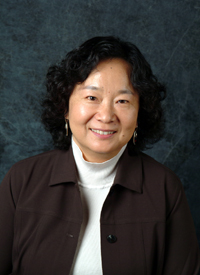Our Science – Hu Website
Wei-Shau Hu, Ph.D.
 |
|
|||||||||||||||||||||||||||
Biography
Dr. Wei-Shau Hu received her Ph.D. in Genetics from the University of California, Davis, in 1987. She studied the mechanisms of DNA recombination that lead to human alpha-thalassemia in Dr. James Shen's laboratory. Under Dr. Howard Temin's guidance, she studied the mechanisms of retroviral recombination as a postdoctoral fellow at the University of Wisconsin. In 1991, Dr. Hu joined the faculty of West Virginia University as an Assistant Professor in the Department of Microbiology and Immunobiology and the Mary Babb Randolph Cancer Center. She was promoted to Associate Professor with tenure in 1998. In 1999, she joined the National Cancer Institute as Senior Investigator and Head of the Viral Recombination Section in the HIV Drug Resistance Program, Center for Cancer Research. Dr. Hu is also an Adjunct Professor at West Virginia University and serves on the Special Review Panel and Study Section of the National Institutes of Health extramural grant funding programs.
Research
Retroviral Recombination, RNA Packaging, and Virus Assembly
We study the interactions among similar and different species of retroviruses -- specifically, recombination and complementation via pseudotyping. Additionally, we study three aspects of viral infection that affect these interactions: infection by more than one virus (double infection); viral RNA packaging, including copackaging of two different RNAs (heterozygous virus); and virus assembly. We use molecular, virological, and genetic systems to study these issues; we also employ state-of-the-art microscopy techniques to approach our experimental questions. Through these studies, our goal is to further our understanding of the plasticity of the retroviral genome and its replication mechanisms.
1. Recombination: A powerful mechanism to generate diversity in viral population. Recombination plays an important role in HIV replication and evolution. For example, many of the primary isolates of HIV are recombinants, and recombination can assort mutations to generate variants that escape host immune responses or are resistant to multidrug treatment protocols. Recombination of HIV-1 occurs during reverse transcription, using information in the two RNAs to produce a hybrid DNA. Therefore, phenotypically different recombinants are generated from viruses containing two copies of different RNAs. Only cells that are doubly infected can produce virions containing two different RNAs. To better understand interactions in HIV-1 populations, we study the dynamics of double infection and the frequency of recombination.
2. Viral RNA trafficking, dimerization, and packaging. One HIV-1 particle contains two copies of viral RNA that form a dimer. We are interested in three aspects of the viral RNA packaging process: the effects of the RNA trafficking pathway on RNA dimerization and RNA packaging; the location and determinants that affect RNA dimerization; and RNA and protein elements important to the specificity of RNA packaging. We use several novel assays to dissect RNA-RNA and protein-RNA interactions, and study how the RNA trafficking pathway may affect these processes.
3. Virus assembly and protein complementation. In addition to recombination, retroviruses can interact with each other through complementation. Proteins and RNAs from two different viruses can interact in doubly infected cells. HIV-1 and HIV-2 are two different viruses that both cause AIDS. A significant population of people are dually infected with HIV-1 and HIV-2, providing the basis for possible interactions between these two viruses in human populations. Using genetic systems and novel microscopy techniques, we have shown that HIV-1 and HIV-2 Gag can interact, coassemble into the same virus particle, and functionally complement each other. We are currently further dissecting these interactions and their effects on cellular restriction factors such as TRIM5alpha. We are also extending the studies to interactions of other viral proteins.
This page was last updated on 6/11/2008.

